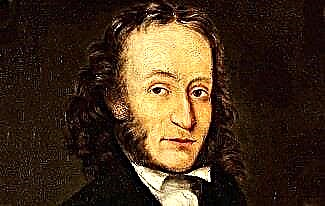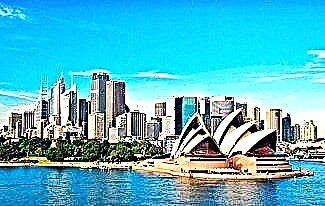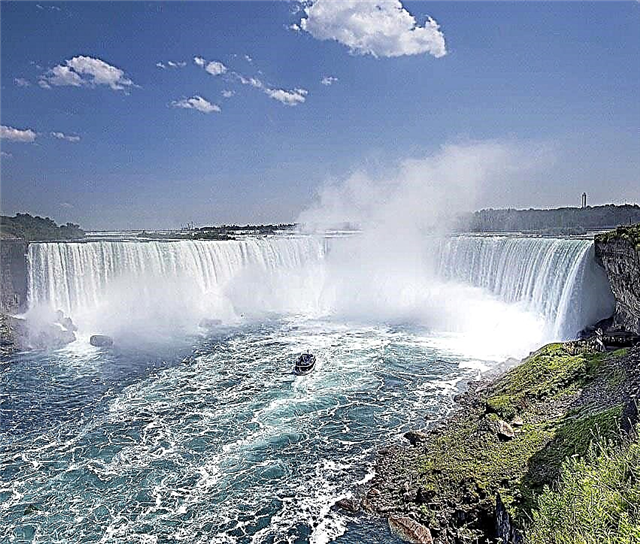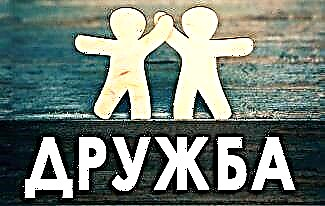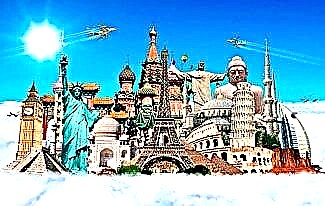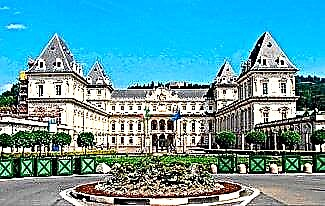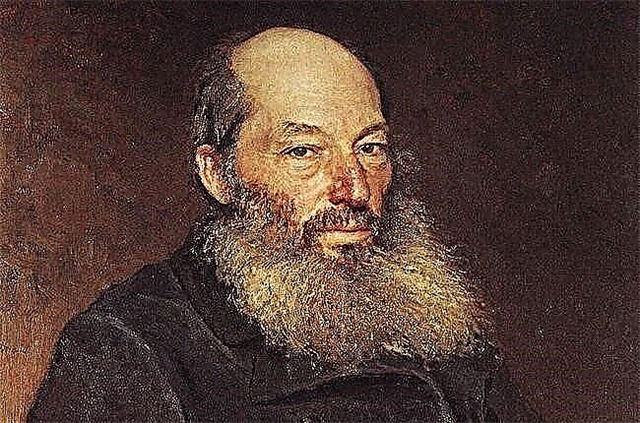Vladimir Ivanovich Vernadsky - Russian scientist-naturalist, philosopher, biologist, mineralogist and public figure. Academician of the St. Petersburg Academy of Sciences. One of the founders of the Ukrainian Academy of Sciences, as well as the founder of the science of biogeochemistry. An outstanding representative of Russian cosmism.
In this article, we will recall the biography of Vladimir Vernadsky, along with the most interesting facts from the life of the scientist.
So, before you is a short biography of Vernadsky.

Biography of Vernadsky
Vladimir Vernadsky was born in 1863 in St. Petersburg. He grew up and was brought up in the family of an official and hereditary Cossack Ivan Vasilyevich.
At the time of the birth of his son, Vernadsky Sr. taught economics at the university, being in the rank of a full state councilor.
Vladimir's mother, Anna Petrovna, came from a noble family. Over time, the family moved to Kharkov, which was one of the largest scientific and cultural centers in Russia.
Childhood and youth
Vernadsky spent his childhood years (1868-1875) in Poltava and Kharkov. In 1868, due to the unfavorable climate of St. Petersburg, the Vernadsky family moved to Kharkov - one of the leading scientific and cultural centers of the Russian Empire.

As a boy, he visited Kiev, lived in a house on Lipki, where his grandmother, Vera Martynovna Konstantinovich, lived and died.
In 1973, Vladimir Vernadsky entered the Kharkov gymnasium, where he studied for 3 years. During this period of his biography, under the influence of his father, he mastered the Polish language in order to study various information about Ukraine.
In 1876 the Vernadsky family returned to St. Petersburg, where the boy continued his studies at the local gymnasium. He managed to get an excellent education. The young man could read in 15 languages.
In this period of time, Vladimir Vernadsky became interested in philosophy, history and religion.
This was the first step of a teenager on the path to knowledge of Russian cosmism.
Biology and other sciences
During the biography of 1881-1885. Vernadsky studied at the Faculty of Natural Sciences of St. Petersburg University. An interesting fact is that the famous Dmitry Mendeleev was among his teachers.
At the age of 25, Vernadsky left for an internship in Europe, having spent about 2 years in different countries. In Germany, Italy and France, he received a lot of theoretical and practical knowledge, after which he returned home.
When he was only 27 years old, he was entrusted to lead the Department of Mineralogy at Moscow University. Later, the mind managed to defend his doctoral dissertation on the topic: "The phenomena of sliding of crystalline matter." As a result, he became a professor of mineralogy.

Vernadsky worked as a teacher for over 20 years. During this time he traveled frequently. He traveled to many Russian and foreign cities, studying geology.
In 1909, Vladimir Ivanovich made a brilliant report at the 12th Congress of Naturalists, in which he presented information on the joint finding of minerals in the bowels of the Earth. As a result, a new science was founded - geochemistry.
Vernadsky carried out fantastic work in the field of mineralogy, having made a revolution in it. He separated mineralogy from crystallography, where he linked the first science with mathematics and physics, and the second with chemistry and geology.
In parallel with this, Vladimir Vernadsky was fond of philosophy, politics and the radioactivity of elements with great interest. Even before joining the St. Petersburg Academy of Sciences, he formed the Radium Commission, which was aimed at finding and studying minerals.

In 1915, Vernadsky gathered another commission, which was to investigate the state's raw materials. Around the same time, he assisted in organizing free canteens for poor fellow citizens.
Until 1919, the scientist was a member of the Cadet Party, adhering to democratic views. For this reason, he was forced to go abroad after the famous October Revolution took place in the country.
In the spring of 1918, Vernadsky and his family settled in Ukraine. Soon he founded the Ukrainian Academy of Sciences, becoming its first chairman. In addition, the professor taught geochemistry at the Taurida University of Crimea.
After 3 years the Vernadsky returned to Petrograd. The academician was appointed head of the meteorite department of the Mineralogical Museum. Then he gathered a special expedition, which was engaged in the study of the Tunguska meteorite.
Everything went well until the moment when Vladimir Ivanovich was accused of espionage. He was arrested and put behind bars. Fortunately, thanks to the intercession of many prominent figures, the scientist was released.
During the biography of 1922-1926. Vernadsky visited some European countries, where he read his lectures. At the same time, he was engaged in writing. From under his pen such works as "Geochemistry", "Living Matter in the Biosphere" and "Autotrophy of Humanity" were embroidered.
In 1926, Vernadsky became the head of the Radium Institute, and was also elected head of various scientific communities. Under his leadership, underground currents, permafrost, rocks, etc. were investigated.
In 1935, Vladimir Ivanovich's health deteriorated, and on the recommendation of a cardiologist, he decided to go abroad for treatment. After treatment, he worked for some time in Paris, London and Germany. Several years before his death, the professor headed the uranium commission, essentially becoming the founder of the USSR's nuclear program.
Noosphere
According to Vladimir Vernadsky, the biosphere is a functioning and organized system. Later he came to the formulation and definition of the term noosphere, as modified due to human influence of the biosphere.

Vernadsky promoted rational actions on the part of mankind, aimed both at meeting basic needs and at creating balance and harmony in nature. He spoke about the importance of studying the Earth, and also talked about ways to improve the ecology of the world.
In his writings, Vladimir Vernadsky said that a good future for people depends on a carefully built social and state life based on creativity and technical progress.
Personal life
At the age of 23, Vladimir Vernadsky married Natalia Staritskaya. Together, the spouses managed to live for a long 56 years, until the death of Staritskaya in 1943.
In this union, the couple had a boy Georgy and a girl Nina. In the future, Georgy became a famous specialist in the field of Russian history, while Nina worked as a psychiatrist.
Death
Vladimir Vernadsky outlived his wife for 2 years. On the day of her death, the scientist made the following entry in his diary: "I owe everything good in my life to Natasha." The loss of his wife seriously crippled the man's health.

A couple of years before his death, in 1943, Vernadsky was awarded the 1st degree Stalin Prize. The following year, he suffered a massive stroke, after which he lived for another 12 days.
Vladimir Ivanovich Vernadsky died on January 6, 1945 at the age of 81.

